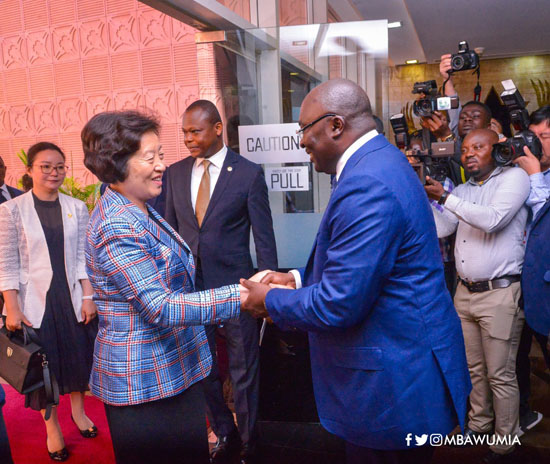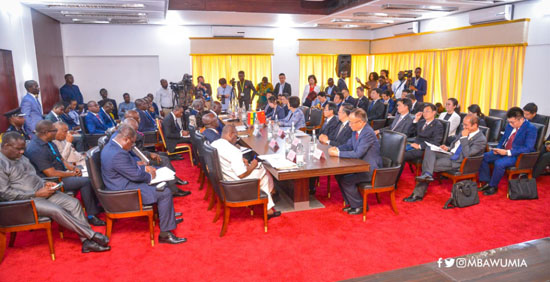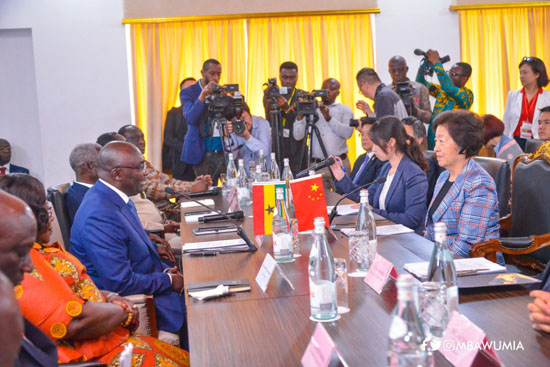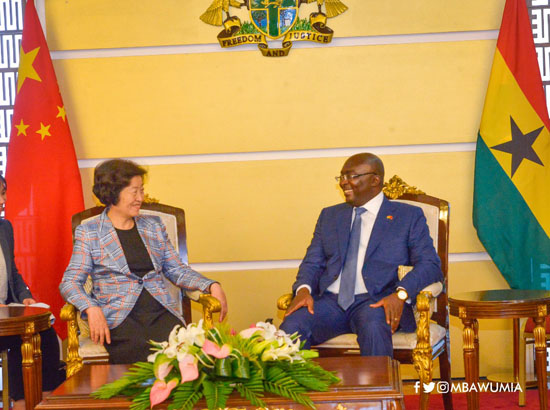
China releases funding for Sinohydro projects – Bawumia reveals
The first tranche of Chinese development loan, known as the Sinohydro deal, has been released.
Ghana and China signed the agreement in which China will have access to sites to mine bauxite as compensation for the development assistance.
Advertisement
The Vice-President, Dr Mahamudu Bawumia, who revealed this at the Jubilee House in Accra yesterday, indicated that projects under the agreement had been grouped in lots, and their review and approval were ongoing.
Major progress had been made, Dr Bawumia stated, with the governments of China and Ghana determined to ensure the success of the ‘bauxite for development’ barter deal, which would see “the leveraging of a fraction of Ghana’s bauxite to undertake a massive overhaul of her infrastructural, industrial and agricultural base.”
The Vice-President made the disclosure at bilateral talks with a Chinese delegation. The Ghanaian delegation included the Chief of Staff, Mrs Akosua Frema Osei-Opare, and Ghana’s Ambassador to China, Mr Edward Boateng.
The Chinese side was led by the Vice-Premier of the State Council of China, Sun Chunlan, who is on a three-day official visit to Ghana.
“I want to thank you and the government of China on our Sinohydro facility. I’m happy that Sinosure (China Export & Credit Insurance Corporation) has approved the first lot of the Phase One. We are happy with the progress,” Dr Bawumia said.
He added: “There was a time when people thought maybe it would not materialise but it has materialised and we hope that the rest of the first phase will come through by March of 2020,” the Vice-President stated.

Affirmation
A statement from the Jubilee House said Dr Bawumia reaffirmed the desire of the government and people of Ghana to work hand in hand with China to ensure mutual benefit and growth, emphasising that Ghana was determined to learn from China.
Vice President Bawumia expressed the government’s appreciation for the financial support China had offered to Ghana, made up of a 300 million Yuan (approximately GH¢236.18 million/$42.79 million) grant and a debt write off of 250 million Yuan (approximately GH¢196.82 million/$35.66 million).
“We are also very grateful for your support in the vocational and technical institutes that you are helping us to put together which you are helping us to launch today. It is important because Ghana wants to learn from China, and we know that in China, the development of the skill of the people is very important. This is why the technical and vocational training is very important and why your support is most appreciated,” Dr Bawumia was quoted as saying.

Response
Chunlan commended the Nana Akufo-Addo administration for its commitment to the development of the nation, which had informed the implementation of programmes such as Planting for Food and Jobs, One District, One Factory, One District, One Warehouse and the Free Senior High School, which would have a direct, major impact on lives.
“Since I arrived yesterday, I have been impressed with the warmth of your government and the policies you are implementing to develop Ghana. I wish you all the best,” he said.

Background
Dr Bawumia went on a four-day official visit to the China in 2017, where he announced the signing of a number of memorandum of understanding (MoUs) with Chinese state actors to provide financing for a number of infrastructural projects in Ghana, to be financed by the exploitation of some of Ghana’s minerals, in particular bauxite.
The $2 billion Master Project Support agreement was approved by parliament in July last year, with each of Ghana’s 16 regions planned to benefit from the Sinohydro arrangement.
The projects include hospitals, extension of electricity to rural communities, and construction of court and residential buildings for the Judicial Service, landfill sites and industrial parks.
Under the deal, Sinohydro Group Limited of China will provide the infrastructure of the government’s choice in exchange for Ghana’s refined bauxite.
The first phase of the project, costing $646.6 million, begins with the Tamale Interchange project.
Parliament approved projects from lot one to 10 under the first phase.
The second phase of the project will come on stream after approval by Parliament. It will include an additional 1,300 kilometres of roads, three interchanges, and 69 steel bridges at an estimated $850 million.

Lot 1 – Construction of Accra Inner City Roads. A total of eighty-four (84) kilometres of roads located in Trobu, Anyaa-Sowutoum, Dome-Kwabenya, Adenta and Teshie will be constructed;
Lot 2 – Construction of Kumasi and Mampong Inner City Roads. A total of one hundred (100) kilometres of inner-city roads will be constructed in Kumasi and Mampong. In Kumasi, the affected road networks are in Manhyia, Suame, Tafo Pankrono, Asokwa, Kwadaso, Oforikrom, Subin, Nhyiaeso and Bantama;
Lot 3 – Construction of the Tamale Interchange;
Lot 4 – Construction of the PTC Roundabout Interchange, in Sekondi-Takoradi, the first interchange in the western part of our country;
Lot 5 – Dualisation of the Adenta-Dodowa Road. Fourteen (14) kilometres of the Adenta-Dodowa Road will be dualised so as to reduce congestion, improve road safety, and reduce travel times on the corridor;
Lot 6 – Construction of Sunyani Inner City and Berekum Township Roads. A total of thirty-nine (39) kilometres of roads will be constructed in Sunyani and Berekum Township. In Sunyani, twenty-nine (29) kilometres of inner-city roads will be constructed, whilst Berekum Township will see ten (10) kilometres of its roads constructed;
Lot 7 – Construction of Prestea Township and Cape Coast Inner City Roads. A total of thirty-two (32) kilometres of roads will be constructed in Cape Coast and Prestea. In Cape Coast, twenty-two kilometres (22) of inner-city roads will be constructed, whilst Prestea Township will see ten (10) kilometres of roads constructed;
Lot 8 – Upgrading of Selected Feeder Roads in Ashanti and Western Regions. Sixty-eight (68) kilometres of feeder roads in Ashanti and Western North regions will be rehabilitated. The roads that will be rehabilitated are mainly in communities that have bauxite deposits;
Lot 9 – Rehabilitation of Akim Oda-Ofoase Road. This lot involves the rehabilitation of the thirty-eight (38) kilometre Akim Oda-Ofoase road, which is part of the trunk road network, IR3, and passes through several rural communities that connect Akim Oda to Ofoase;
Lot 10 – Construction of the Hohoe-Jasikan-Dodo Pepesu Road of the Eastern Corridor. This will involve the construction of the sixty-six (66) kilometre section of the Eastern Corridor Road between Hohoe to Jasikan and Dodo Pepesu.



